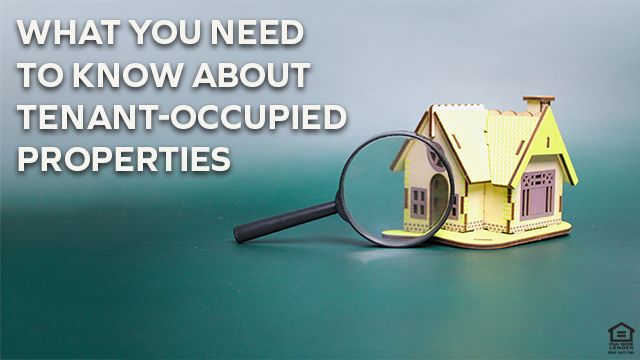
What You Need to Know About Tenant-Occupied Properties

Whether you’re purchasing or selling a tenant-occupied property, there are a handful of guidelines and procedures that you’ll need to understand prior to your closing date. Below is a guide that outlines everything you need to know about tenant-occupied properties to ensure a smooth sale for all involved parties.
What Qualifies as a Tenant-Occupied Property?
It’s common for real estate listings to specify if a property is tenant-occupied or not. This distinction shows that a tenant currently lives on property and has a lease agreement with their landlord.
These properties can offer buyers a steady stream of rental income, but not without the added responsibility of managing the tenants and property.
How to Sell a Tenant-Occupied Property
A property does not need to be unoccupied for the owner to sell it; however, there are key items to consider before doing so.
Review The Lease Agreement
Familiarize yourself with the lease agreement for the current renters, especially any clauses regarding the sale of the property.
Leases may include clauses that allow the landlord to sell the property, whereas others may require the landlord to give the tenants a specific notice or the opportunity to purchase the property themselves.
Unless a negotiated move-out settlement has been previously agreed upon by both parties, residents with a fixed-term lease that doesn’t have a termination clause are permitted to inhabit the property while it is up for sale.
Knowing a Tenant’s Rights
Tenants have a right to enjoy the property and should not be overly disrupted by the selling process. Tenants living in a building while it’s on the market have specific rights granted by federal and state laws. Depending on the particular location, an inspection and renewed certificate of occupancy may be required before the property can be listed for sale.
Above all, the seller should be respectful of the privacy of their tenants and avoid showing the property to potential buyers without their permission. It’s important to remain transparent and understanding of the tenants to ensure a smooth sales process.
Accounting for Tenants When It’s Time to Sell
If you are selling the property while the tenants are still occupying, you will need to solidify the terms of the sale with the buyer, such as whether the tenants will be required to move out or if the buyer will assume the lease.
Purchasing a Tenant-Occupied Property
For buyers, particularly first-time buyers, a multi-family home can be a great way to become homeowners. The income generated from having renters can often cover both the mortgage and any associated maintenance costs.
Residential multi-family homes serve as a good alternative when single-family homes are difficult to find and interest rates are high, but it’s important to note that buyers seeking FHA, VA, or USDA home loans must occupy the residence.
Final Thoughts
Selling or purchasing a property while tenants are involved can be a challenge, but it’s still a worthy endeavor. Landlords should take time to review the lease agreement before listing the property and consider the rights of their tenants when entering the sales process.
A rental property is a great way to generate additional income, but understanding the necessary guidelines, procedures, and tenant rights are a must. When it comes to securing a home loan for a rental property, reach out to your trusted loan officer to discover which options are best for you.